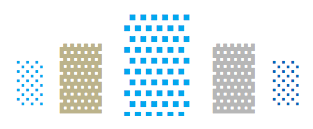The Other Side of Math
∞ PART ONE ∞
BRIGHT FUTURES ACADEMY
 BRIGHT FUTURES ACADEMY
BRIGHT FUTURES ACADEMY
A MATHEMATICAL FABLE
Narrator: Spring has arrived on the campus of Bright Futures Academy, a K-12 private school outside Philadelphia that educates the elite of America’s youth. The main lecture hall is washed in morning sunshine, the room filled to capacity with young men and women, each anticipating two hours of wisdom from the mind and lips of the school’s esteemed and beloved Professor of All Languages (Classical Greek and Latin, Sanskrit, Russian, Mandarin, Japanese, German, French, Italian and Spanish), Dr. Albert Stenn.
A group of visiting educators enter the hall as the clock strikes ten. Stenn, punctual as always, begins his lecture:
Stenn: “You are indeed lucky young men and women. In four short weeks, each of you will graduate from the twelfth grade, leaving Bright Futures Academy with the best that modern education can offer. In this, our final class on the Philosophy of Education, there is one last principle necessary to the success of your learning experiences: After decades of intense research and personal experience, I have determined that individuals learn most effectively when approximately 50% of their learning time is devoted to receiving knowledge and wisdom from others and about 50% of the time they should be causing knowledge to come into existence. That would be an ideal ratio for —
Student interrupts: “But Dr. Stenn, are you talking about ‘cause’ and ‘effect’? We use those terms in physics and chemistry, but do they mean the same thing in education?”
Stenn: “A good question, Joel! Let me give you examples from our own curriculum. When you read what another has written, you are receiving knowledge. You are inflowing the ideas of another, are you not?”
(Audible murmurs of agreement can be heard from many voices.)
Student: “Yes, I see that.”
Stenn: “Good, good. Obviously, receiving another’s knowledge is being an effect of that writer and his ideas. But how about when you write an essay, a story, a research paper — or even a poem — aren’t you outflowing knowledge? Aren’t you creating ideas and then giving your ideas to another or others? That’s what I mean by ‘causing knowledge’: you create the knowledge. Does that make sense as an educational principle?”
Student: “Oh, yes, definitely! Makes total sense to me. But what about math? How does ‘cause and effect’ operate in mathematics — specifically in our math curriculum?”
Stenn: “Such a profound question, yet susceptible of a simple answer (‘and,’ Stenn realizes with horror, ‘how odd that no one ever asked me that before!’). When you solve the math problems presented to you by the author of your math text after studying his definitions, axioms, properties, rules, algorithms and solutions, you are receiving the knowledge of mathematics as given in his words, then applying that knowledge exactly as you have been taught. That’s being effect. Your knowledge has come from outside you.”
Student: “Oh! Now I understand! But what about ‘being cause’ in math?”
Stenn: “Aha! Joel, no wonder you are Valedictorian and President of the Class of 2016! One elementary example will suffice to illuminate the principle of ‘cause in education’: When you create your own math problems, solve them your way and then check your answers simply because you decided to – problems, solutions and checking derived solely from your own motivation and invention – you, admittedly to a modest degree, are causing mathematical knowledge. The problem, the solution and the checking are yours, not the books. This makes sense as an educational step because you will soon be required to operate as a causal, creative individual in the adult world of commerce, humanities, arts and scien—“
Student: “But, Doctor, I’ve never caused a math problem or solved that –“
Stenn: “Now shush, my young friend. I’m inspired! Let’s go crazy for a moment and take the idea of ‘creating mathematical knowledge ’ even further: All on your own, merely because you are curious, you might do some Internet research and find another definition for a fundamental math term like ‘number’, ‘postulate’ or ‘property’ and thereby discover a concept that makes more sense to you than the meaning given in your textbook’s glossary. Or perhaps — again from self-generated interest — you decide to experiment and just for fun create your own numeration system, a place-value system like base-4 or base-8. Or – and now I’m really going over the top, but bear with me, please — you find or even develop your own alternative algorithms for, say, checking answers for the division of polynomials by binomials. Yes, and what if you simply researched or discovered a different way to multiply or divide and improved one of the four basic arithmetic operations instead of using the book’s algo –“
Student : “But Doctor Stenn, after 13 years at Bright Futures, I’m about to graduate and haven’t created a single math problem yet. I’m an honor’s student in precalculus and all I do is solve the textbooks’ problems by the exact method laid out by the text’s authors. In fact, that’s how I got to be Valedictorian. The math book — or my teacher — tells me everything I need to know. Just now you mentioned a base-4 place-value system. I know base-10 math as well as I know my mother’s sweet face, but what in the name of heaven is ‘base-4’? Until this moment no one even suggested I create my own problems or place values or solve anything my own way. I wouldn’t know where to start!”
Stenn: “You wouldn’t? My, oh, my! Hmm…well, perhaps…actually, I’m in the Languages Department and don’t visit the Math Department too often, so I’m not sure what they teach you over…”
(As the visiting educators hastily leave the hall, loud noises can be heard behind them: chaos spontaneously erupting when the assembled members of the Class of 2016 realize they have been cheated.)



